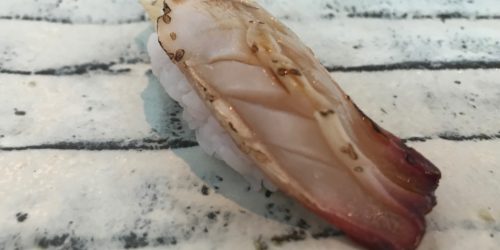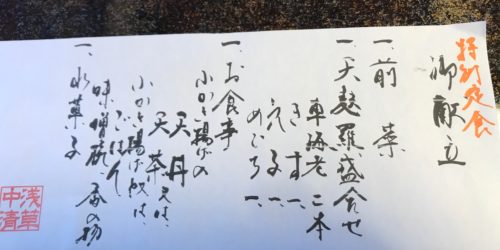The beautiful sushi of January, 2021
The New Year began.
After I appreciated Noh at Ginza in Tokyo, I headed to the Conrad Hotel to have dinner.
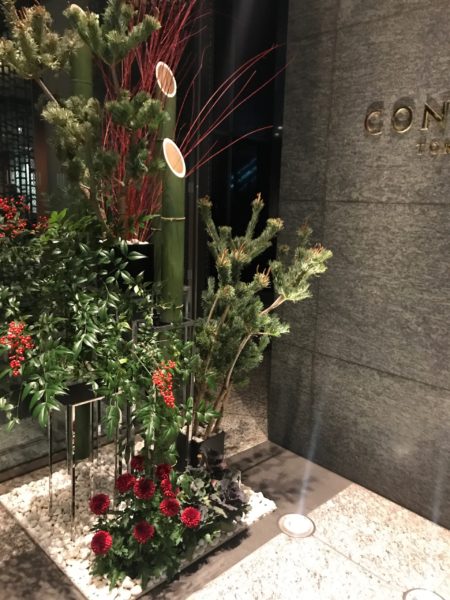
I had reserved the usual Japanese restaurant on the 28th floor of the hotel.
Kazahana is the restaurant that serves delicious, authentic sushi.
One whole wall of the restaurant is a window, and I could see a wide range of Tokyo’s city lights.
But that scenery made me feel something melancholy that day.
The social situation, especially in Tokyo, is so dark.
Since the end of last year, the COVID-19 infection has spread rapidly, and there are no signs that the situation is being brought under control.
However, we have to live positively.
I believe that it will lead to a bright tomorrow.
I will never yield myself to COVID-19.
Authentic sushi makes me feel very positive, so I will savor a lot of authentic sushi this year.
Now, I’ll introduce sushi according to the order of eating.
There were seven appetizers available that day.
The first one was assorted finger foods (black beans, herring roe, small dried sardines, a rolled omelet, and vinegared radish with salmon).
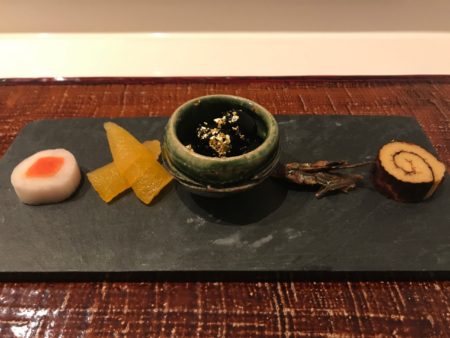
This lineup was the same as the Osechi (traditional Japanese dish for the New Year). It augured well for the future!
The second one consisted of slices raw Buri (yellowtail).
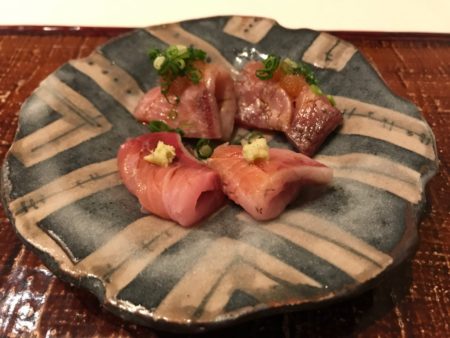
The third one was boiled octopus.
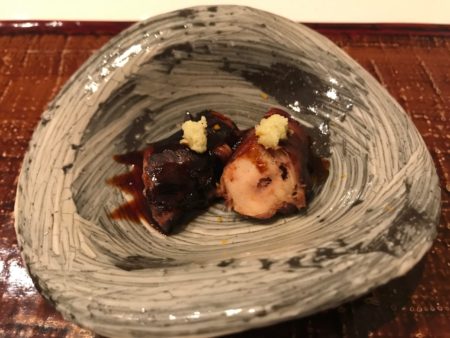
I always think that their boiled octopus is amazing. Its texture was very soft, and its rich flavor had soaked right through the octopus.
It was only seasoned with soy sauce and sugar. It’s like a magic trick.
The fourth one was Kawahagi (thread-sail filefish) with liver sauce.
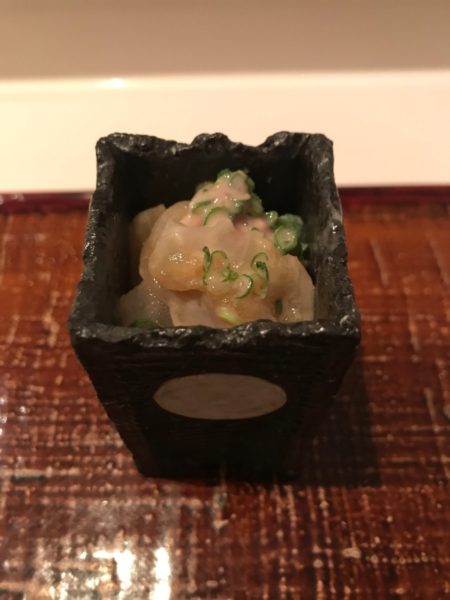
The fifth one was lightly grilled Managatsuo (butterfish) with a gelatinous soy sauce.
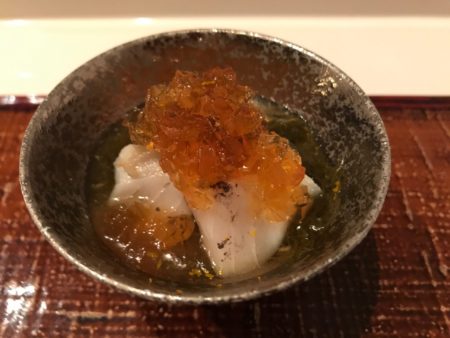
The sixth one was assorted tempura (prawn, Japanese squash, Maitake mushroom, sweet green pepper, and cuttlefish).
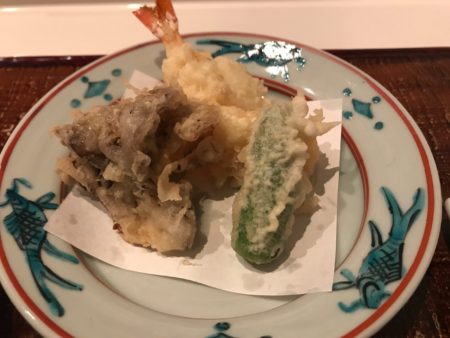
The seventh one was assorted Sashimi (sea cucumber, soft roe, scallops, barracuda, and monkfish liver).
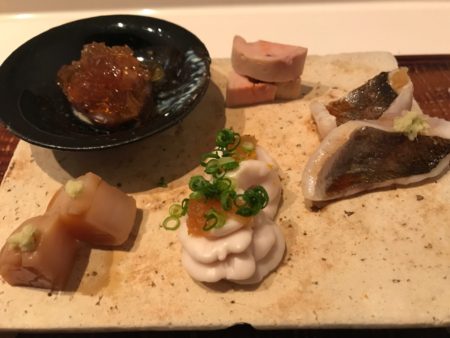
There were more appetizers than usual.
At last the sushi chef started to make my sushi.
Now, I’ll introduce the sushi that I ate.
For your information, I will provide the names of the wine that I drank on that day.
They were, Veuve Clicquot Yellow Label (Champagne), Dr Konstantin Frank Semi-dry Riesling (New York), and Kenzo Estate Asatsuyu Sauvignon Blanc (California).
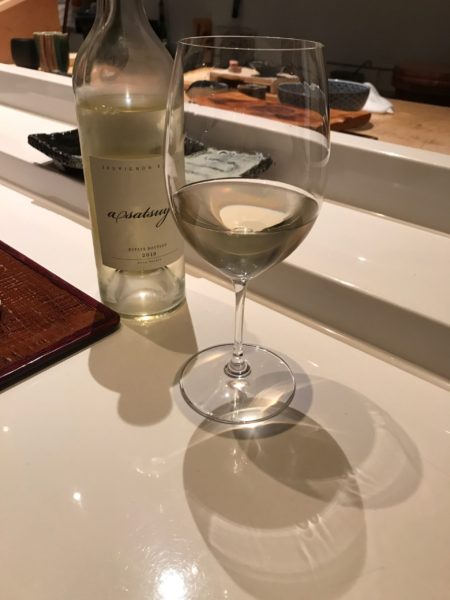
It seems that many Japanese people drink beer with sushi, but I think that white wine is the most suitable for sushi.
The first sushi was Yari-ika (spear cuttlefish).
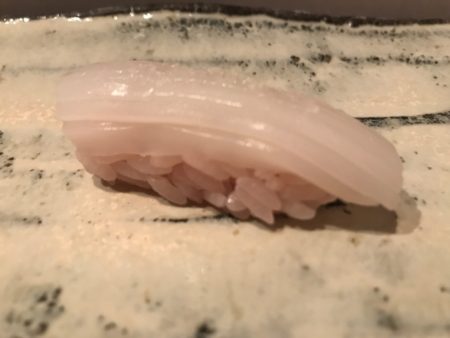
It looked really elegant. Yari-ika has a subtle sweetness, and it really went well with vinegared rice.
The second sushi was Madai (red seabream). It was chewy, and the more I chewed it, the more its natural sweetness came out.
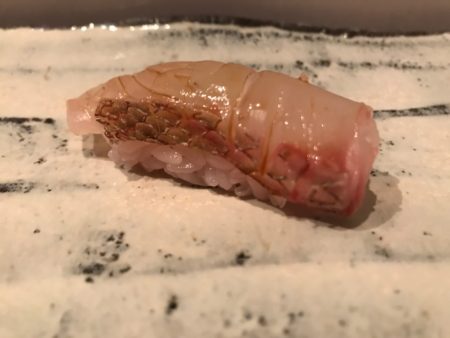
Madai is known as an indispensable fish at celebrations.
The third sushi was Sayori (halfbeak).
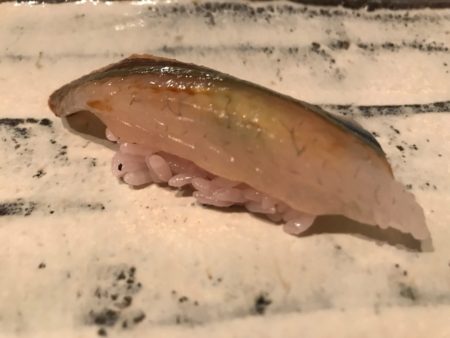
This Sayori had been sandwiched between pieces of kelp for a few days to transfer its flavor to the Sayori.
This traditional cooking method is called, Kobu-jime.
By doing that, Sayori has a different depth to its original flavor.
It tasted very good. Some Shiso (Japanese basil) was placed between Sayori and vinegared rice. It refreshed my mouth.
The fourth sushi was Aji (Horse mackerel).
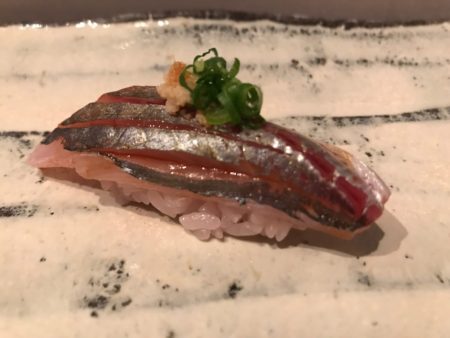
It was thick, and it tasted really good.
The fifth sushi was Aoyagi (surf clam).
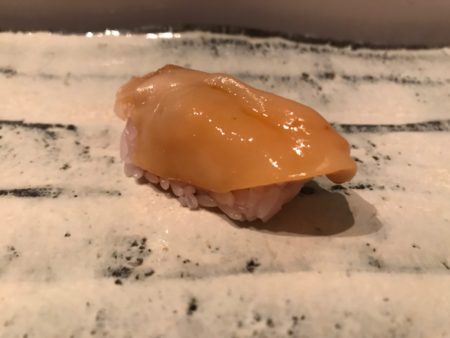
It had a natural sweetness and a distinct flavor of the sea.
The sixth sushi was Kurumaebi (prawn).
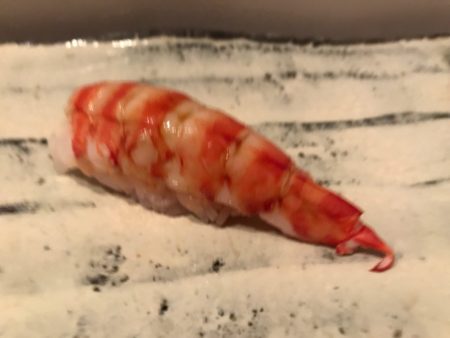
It was too beautiful to eat.
Its characteristic prawn flavor and sweetness were well-harmonized in my mouth.
The seventh sushi was Cyutoro (medium fatty tuna).
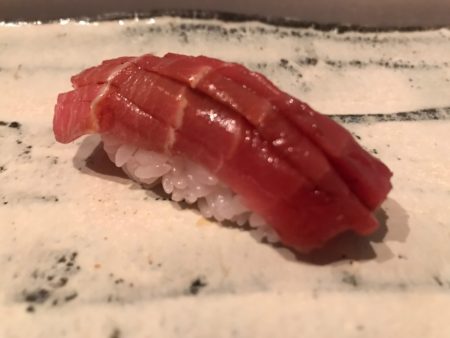
This tuna was from Oma Town, Aomori Prefecture. Oma Town is famous for high quality and delicious tuna.
The eighth sushi was Kinme-dai (red bream).
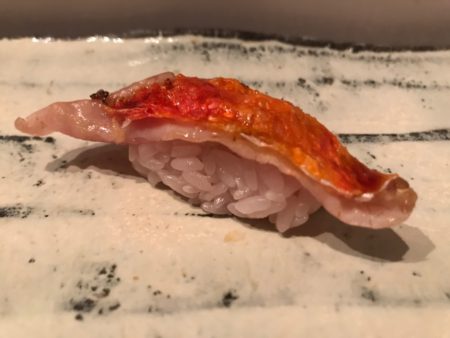
Kinme-dai is fatty in winter, so now is the best time to eat it.
Its skin was toasted lightly. Thereby, its fat was oozing out, and its rich flavor exploded in my mouth.
I think that fatty fish and vinegared rice are a good combination.
The ninth sushi was Uni (sea urchin).
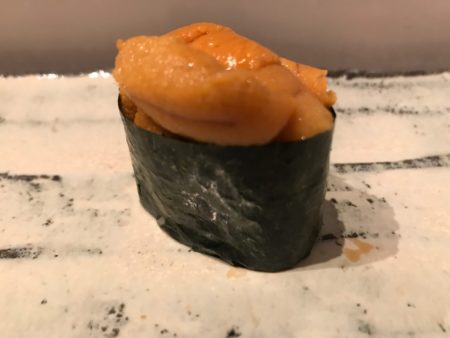
It was very creamy and delicious.
This type of sushi is called, “Gunkan”.
It is the sushi made by wrapping vinegared rice with dried seaweed around the outside and placing Uni or Ikura (salmon roe) on it.
The tenth sushi was Anago (conger eel).
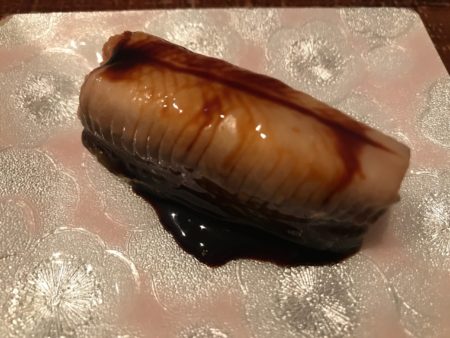
Unfortunately, I was already full.
I ate the delicious Anago sushi somehow, and I said to the sushi chef, “I’m sorry, I cannot eat anymore”.
I had to finish halfway through the meal.
It was unfortunate, but there was nothing I could do about it.
But I was satisfied with their amazing, authentic sushi.

